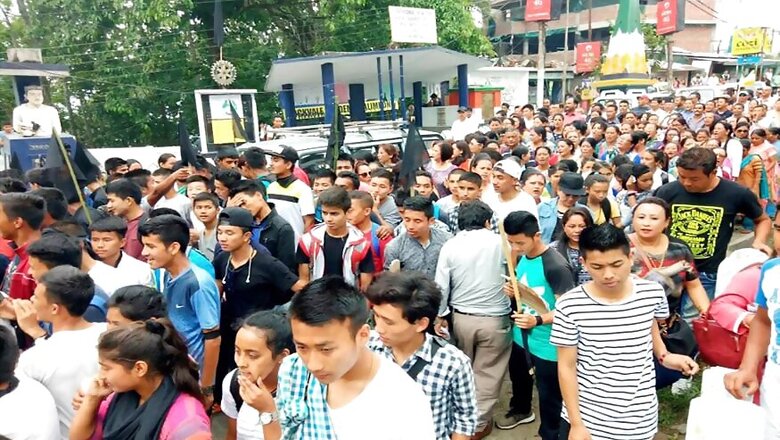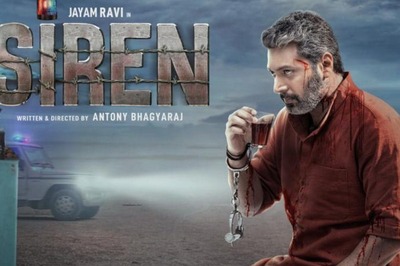
views
The demand for Gorkhaland has erupted once again. This is the third occasion in the last 30 years, this time in a much more vocal, sweeping and determined manner. People seem to have taken the leadership. There are five primary reasons attributed to this new movement.
First, the idea of autonomous councils like Darjeeling Gorkha Hill Council (DGHC) in 1988 and the present Gorkhaland Territorial Administration (GTA) as a solution to statehood has failed and collapsed. Both DGHC under Subash Ghising and GTA under Bimal Gurung suffered from the same syndrome. Bengal kept them deprived in every respect: handing over of agreed departments, power, functions, finance, orientations and external support. Both the Chairmen ran DGHC and GTA as their personal fiefdom without any plans, audits and evaluation. They remained totally unaccountable and beyond any scrutiny. Both became the symbol of violence, fear and revenge and opted for safer option of sending members of parliament from outside the hills. Bengal Government coordinated with both to systematically demolish well-known institutions. All these created a deep sense of insecurity among the people. Neither Gorkhaland was in sight nor development ever happened. People at large lost both ways.
Second, if Jharkhand, Uttarakhand, Chhattisgarh and Telengana could happen without much fuss, why not Gorkhaland? Gorkhaland as a new state would complete the geographical definition of the North-East region. If Sikkim and Assam are parts of the North-east, then why not the contiguous Darjeeling district and the Dooars? The political history of the demand for Gorkhaland dates back to 1907. The memorandum submitted by the Hillmen’s Association to Sir Samuel Hoare, the Secretary of State for India, on October 25, 1930, states in detail why the hill people wanted to remain outside Bengal. The bestowing of ‘partially excluded area’ status to Darjeeling district in the pattern of ‘excluded area’ extended to most of the regions in the North East by the British India was actually the recognition of its uniqueness within Bengal.
Demands were vociferously made including before the Simon Commission and the State Reorganization Committee in early 1950s. Over the years, this demand acquired much more dynamic dimensions including the national security angle as this is the only district that has three international borders with Bangladesh, Bhutan and Nepal and little north with China too. In fact, the entire North East region of India is connected by this district through Chicken Neck corridor.
Third, the last 30 years have clearly shown that the Bengal government’s interest in Darjeeling is only skin deep. It continues to treat most parts of Darjeeling and the Dooars as an ‘internal colony’. This attitude was reflected most clearly in the way the government tried to hurriedly impose the Sixth Schedule status on Darjeeling in 2005. All the economic activities including tea, cinchona, tourism and educational hubs literally became sick. For the Gorkhaland agitators, this proved to be the last straw. The three-tier Panchayati Raj was disbanded in Darjeeling hills in early 1990s and the development funds to rural areas, including tea gardens, literally dried. Hardly any central government projects reached there. The steady rise of Sikkim economically has had a serious effect on the Darjeeling region. Every one there now feels that the only way to ensure development for the hill people is to let them have a constituent state of their own.
Both the Gorkhaland agitation of 1980s and during 2007-2011 covered the terai and plains of Siliguri and also the Dooars region of Jalpaiguri district. However, while signing the Tripartite agreements both the leaders totally sidelined these deprived geographies. Meanwhile, the Bengal Government did pour maximum resources to the terai and the plains and set up institutions like Mahakuma Prishad and Siliguri-Jalpaiguri Development Boards.
Fourth, in the last five years of GTA, it cried hoarse about the power and functions that were promised in the Tripartite Agreement. The state government just did not bother as it found the GTA leadership incapable of delivering goods, corrupt and disruptive and of course not in tune with the ideals of Trinamool Congress. What really offended the hill people and Gorkha Janmukti Morcha (GJM) was the Chief Minister desperately trying to plant and cultivate its own caste based Development Boards that divided the entire hill community into bits and pieces. Instead of reviving the constitutionally provided institution of three-tier Panchayati Raj as elected institution of delivery, the Trinamool Government started funding these unelected and make-shift Boards without even bothering about long term consequences in the region’s cultural ecology.
More seriously this turned the entire development model into total incrementalism and patronisation and the fiefdom started shifting to the Chief Minister of Bengal from the ‘Chief Minister of Gorkhaland’. The clash was inevitable. Bengal’s thinking about the hills became more myopic and action rather petty and condemnable. Meanwhile, GJMM brought the BJP for the second time to Bengal’s crucial northern entry point by successfully supporting its candidate for the Lok Sabah election in 2009 and 2014. Its larger ramification in the state politics was very palpable when the Chief Minster started frequenting Darjeeling hills during all seasons. The number of visits she made to the hills during 2011-2017 could be equivalent to what all the Chief Ministers of Bengal did in the last 65 years. Sadly, all these visits had only plethora of announcements and literally nothing on the ground.
Finally, DGHC and GTA stole the most valuable time in the lives of two generation of talented youths. The level of frustration is peaking with all the traditional means of livelihood getting uprooted. No major national and international development and investments agencies could attempt to go to Darjeeling. This round of movement is, therefore, likely to be more fierce and violent as more than any political party it is this critical mass of youth with no future which has taken over the cudgels of agitation. They come from across various communities — Marwaris, Biharis, Bengalis, Koche-meches, Rajbonshis, Adivasis and Gorkhas. The mainstream political parties are nowhere to be seen now. The presence of local, national and international media is a major boost to the movement.
The Left Front government had called the GNLF movement ‘anti-national’ that ignited it to a flown blown conflict in 1980s. The Trinamool Government again brought some unbelievable notions of “insurgents” and “foreign hands”. If this state constructed narrative becomes popular it could be more fatal to the integrity of Bengal. It amounts to literally welcoming ‘second partition of Bengal’. The emergence of a dangerously communal outfit like ‘Amra Bangali’ had actually exacerbated the situation during 2007-2011.
Gorkhaland, as the 30th State of India, will be one of the most developed states in the country. This state can generate millions of dollars by just managing the economic transactions in the border areas. Darjeeling, as a brand-name, is well known all over the world. If rightly repositioned, it would attract a large number of multi-national companies and both domestic and foreign investments.
[The author is the Founding Vice Chancellor of Central University of Sikkim and also a former member of National Security Advisory Board of Government of India. He teaches at the Jawaharlal Nehru University and also at the Sichuan University in China]



















Comments
0 comment